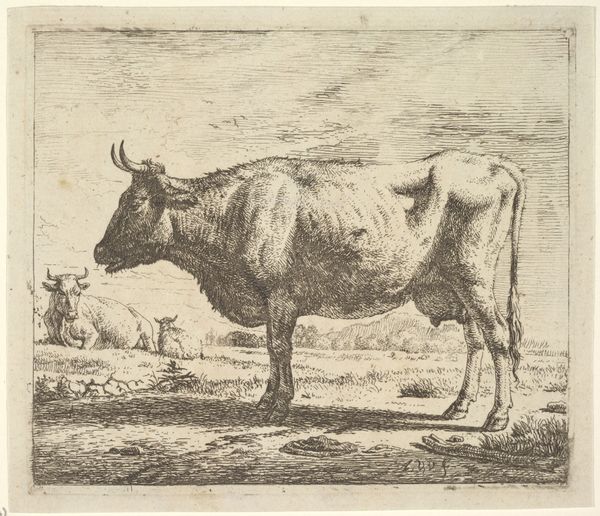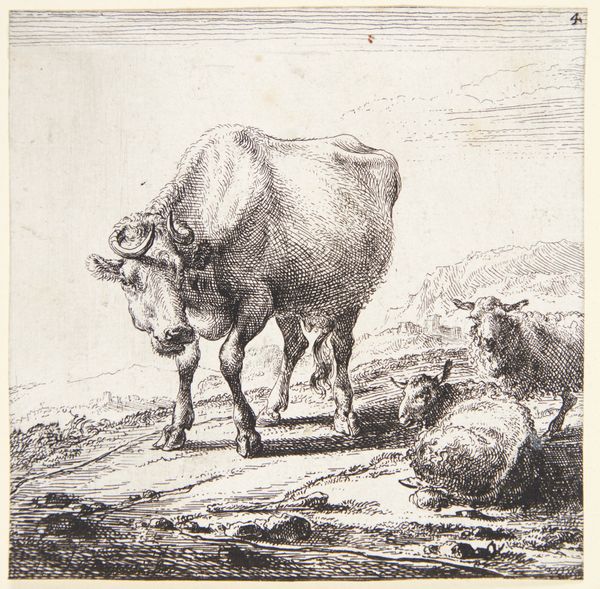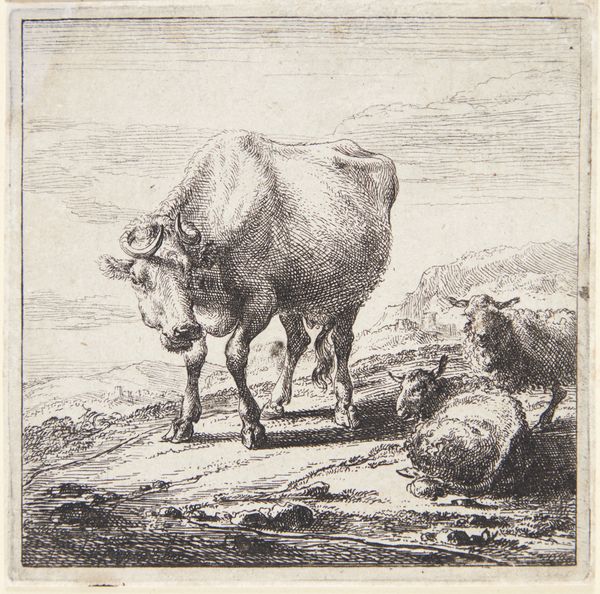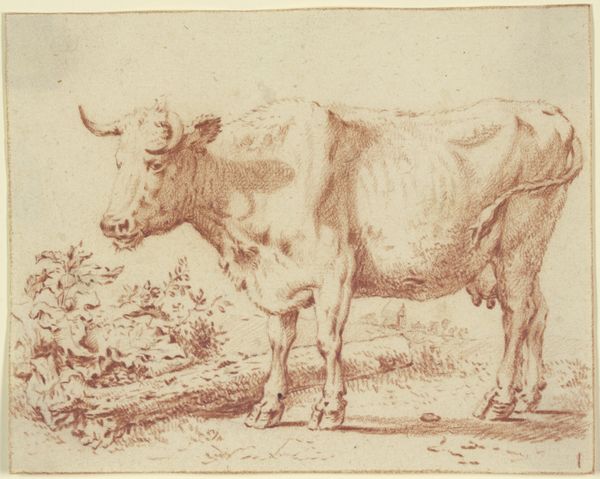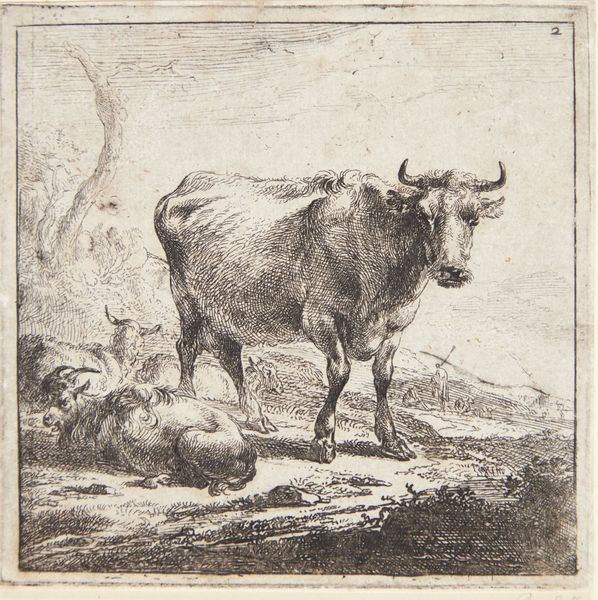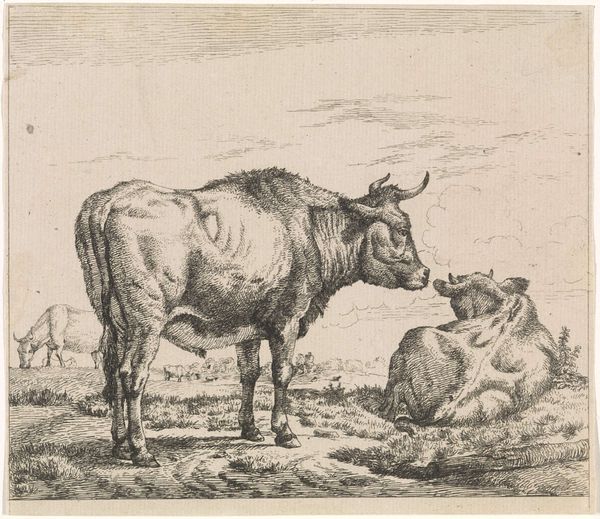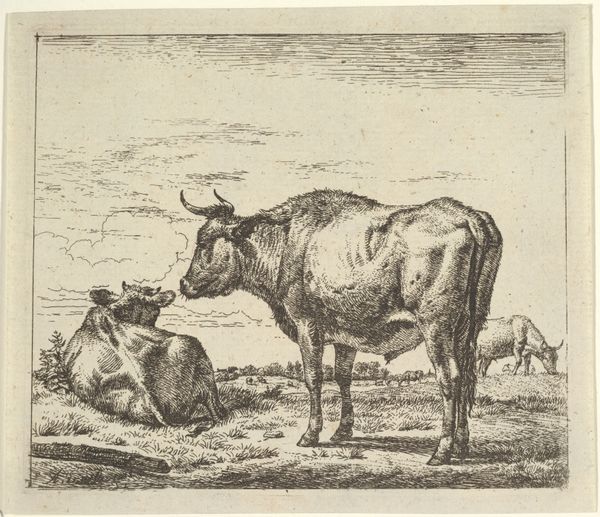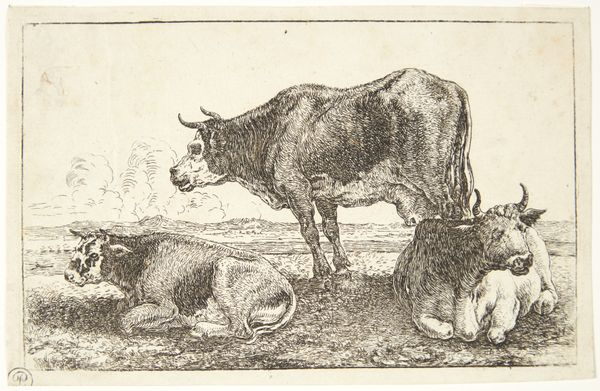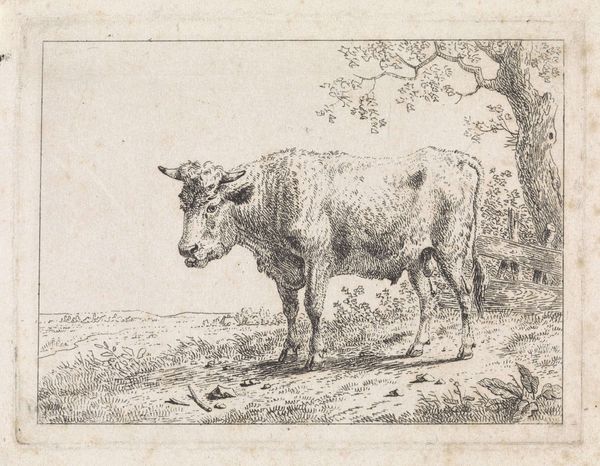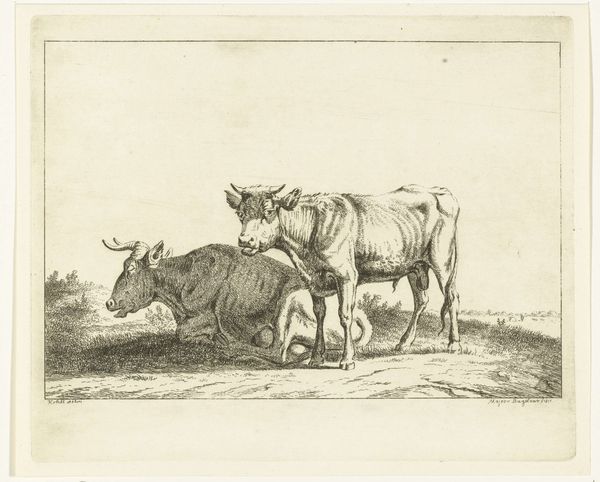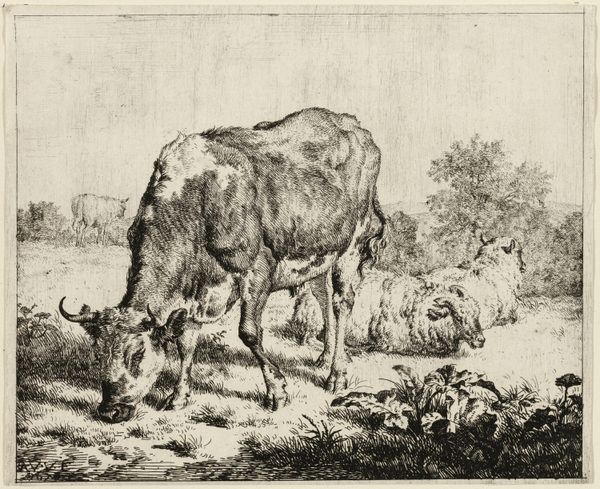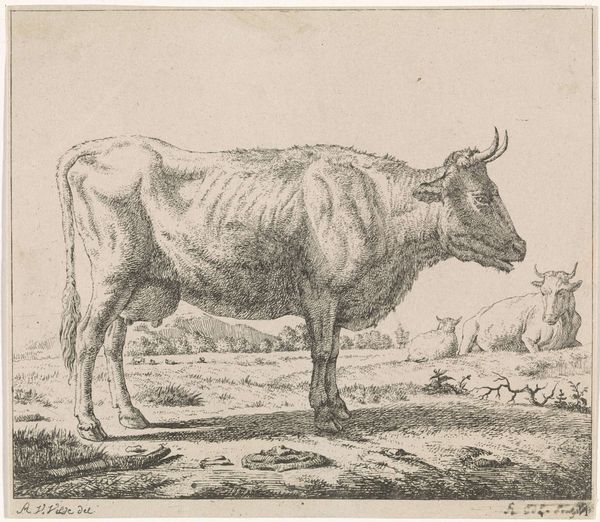
print, etching
#
baroque
#
animal
#
dutch-golden-age
# print
#
etching
#
landscape
#
charcoal drawing
#
figuration
#
genre-painting
Dimensions: 95 mm (height) x 98 mm (width) (plademaal)
Curator: This is Nicolaes Berchem's etching, "Liggende ko og en stående ko set bagfra," from 1644, housed at the SMK in Copenhagen. Editor: It has a calm and rural mood, despite being rendered in simple lines. I immediately focus on the textures created through the etching process – how the lines gather and dissipate to imply mass and volume. Curator: The scene invokes a specific kind of pastoral symbolism. Notice the cows as embodiments of domesticity and tranquility, icons of rural bounty and simpler times—perhaps romanticized. They remind me of classical ideals of the Golden Age. Editor: Yes, but let’s not lose sight of the materiality and labor involved. Etching allowed for multiple reproductions, making images like this accessible to a wider audience, effectively democratizing images of labor and nature. The repetitive act of etching lines into metal—a truly artisanal method—results in a surprisingly industrial product in its potential for dissemination. Curator: Intriguing! Considering your emphasis on distribution, perhaps that proliferation amplifies the symbolic weight – imprinting those idyllic agrarian themes deeper into the collective consciousness. Each print becomes a vehicle for disseminating a cultural memory, so to speak. Editor: That's interesting…it raises a point about consumption. I wonder what impact owning or gifting such a pastoral scene may have on different sectors of Dutch society at the time? I imagine those further removed from agrarian realities find it especially captivating, as opposed to the herdsman standing idly with his resting animals on a long work day? Curator: True. For city dwellers especially, images like this could evoke longing for a perhaps idealized past. They may represent psychological landscapes as much as they document literal ones, as a reminder of a perceived connection with nature and rural existence, even as society became more urbanized. Editor: Reflecting on it, I see the enduring appeal lies in its intricate process and simple lines. An industrial artifact presenting bucolic visions of respite. Curator: And, in those lines, echoes of shared cultural yearning, wouldn't you agree?
Comments
No comments
Be the first to comment and join the conversation on the ultimate creative platform.
